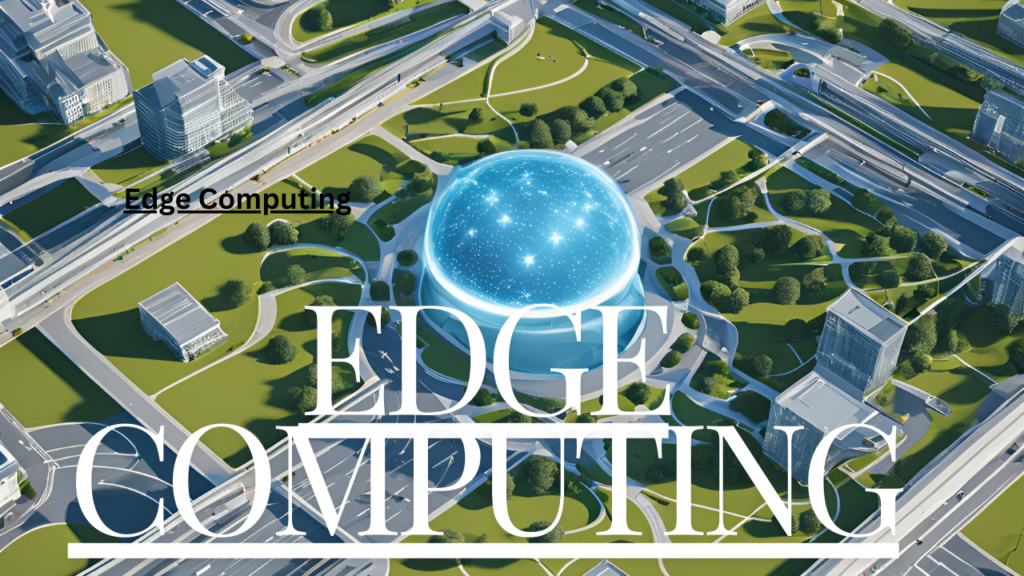Table of Contents
In the digital world of today, efficiency and speed are critical. Edge computing is revolutionizing data processing and analysis, which is advantageous to a wide range of enterprises.. In this article, you will learn about the fundamentals of edge computing, its significance, and why edge computing is revolutionizing real-time data processing.
Describe Edge Computing
Edge computing is a technology that processes data closer to where it is generated rather than sending it to a distant data center. Imagine you have a smart device, like a security camera or a sensor in a factory. Instead of sending all the data it collects to a central server, edge computing allows the device to analyze and process data locally.
Edge computing is important.
- Reduced Latency: By processing data close to the source, edge computing minimizes delays, which is crucial for real-time applications.
- Lower Bandwidth Usage: It reduces the amount of data that needs to be sent to central servers, saving bandwidth and reducing costs.
- Improved Privacy and Security: Data can be processed locally, reducing the risk of data breaches and ensuring sensitive information stays within a secure environment.
How Does Work
- Data Generation: Devices like IoT sensors or smart appliances generate data.
- Local Processing: Instead of sending this data to a distant server, it’s processed locally on the device or nearby edge servers.
- Actionable Insights: The processed data can be acted upon immediately or sent to a central server for further analysis if needed.

Applications of Edge Computing
It is used in various fields, improving efficiency and speed:
1. Smart Cities
Smart traffic lights and surveillance systems use edge computing to analyze data in real-time, helping to manage traffic flow and enhance public safety.
2. Healthcare
Medical devices in hospitals can use to monitor patients and provide real-time alerts to medical staff, improving patient care.
3. Manufacturing
In factories, it enables machines to monitor their own performance and detect faults instantly, reducing downtime and maintenance costs.

Benefits of Edge Computing
- Speed: Faster data processing leads to quicker decision-making.
- Efficiency: Reduces the need for data to travel long distances, saving time and resources.
- Scalability: Easily scales to accommodate more devices and data without a significant increase in infrastructure.
Challenges
Despite its benefits, it also comes with challenges:
- Complexity: Managing a large number of edge devices can be complex.
- Security: Ensuring the security of data processed at the edge is crucial.
- Maintenance: Regular updates and maintenance are needed to keep edge devices functioning properly.
The Future of Edge Computing
The future looks promising, with advancements in technology making it more accessible and efficient. As more devices become connected and data processing needs grow, it will play an increasingly important role in various industries.

Positive Statements
- Enhanced Speed and Efficiency: Edge computing significantly reduces latency by processing data closer to its source, leading to faster decision-making and improved overall system efficiency.
- Reduced Bandwidth Costs: By handling data locally, edge computing minimizes the amount of data that needs to be transmitted to central servers, thus lowering bandwidth costs and easing network congestion.
- Improved Real-Time Processing: Edge computing supports real-time data analysis and response, which is crucial for applications like autonomous vehicles, smart cities, and industrial automation.
- Increased Data Security: Processing data at the edge reduces the volume of sensitive information transmitted over networks, enhancing data privacy and security by limiting exposure to potential breaches.
- Scalability and Flexibility: Edge computing can easily scale to accommodate a growing number of devices and data sources, making it adaptable to various industry needs and technological advancements.
Negative Statements
- Complex Management: Managing a large number of edge devices can be complex and challenging, requiring sophisticated monitoring and maintenance strategies.
- Security Risks: While edge computing can improve data security in some ways, it also introduces new risks, such as the potential for vulnerabilities in numerous distributed devices that need to be secured individually.
- High Initial Costs: Setting up edge computing infrastructure can be expensive, involving investments in new hardware, software, and integration with existing systems.
- Limited Processing Power: Some edge devices may have limited processing capabilities compared to centralized data centers, potentially restricting their ability to handle complex data tasks.
- Maintenance Challenges: Edge devices require regular updates and maintenance, which can be resource-intensive and may pose logistical challenges, especially in remote or hard-to-access locations.
FAQ
What is Edge Computing?
Edge computing refers to the practice of processing data closer to where it is generated rather than sending it to a centralized data center. This approach reduces latency and improves the speed and efficiency of data processing by handling data locally on devices or servers.
How does it work?
It works by performing data processing tasks on devices or servers located near the data source. For example, a security camera with. Can analyze video footage locally and only send critical alerts or summary data to a central server. This setup minimizes the need for data to travel long distances, speeding up response times and reducing bandwidth usage.
What are the benefits?
The main benefits.
- Reduced Latency: faster data processing as it occurs closer to the source.
- Lower Bandwidth Usage: Less data is transmitted to central servers, saving bandwidth and costs.
- Improved Privacy and Security: Local processing reduces the risk of data breaches and keeps sensitive information secure.
What are some common applications?
It is used in various applications, such as:
- Smart Cities: Enhances traffic management and public safety through real-time data processing.
- Healthcare: monitors patients and provides immediate alerts in medical settings.
- Manufacturing: detects faults and optimizes machine performance in real-time.
What challenges does it face?
While it offers many advantages, it also faces challenges such as:
- Complexity: Managing numerous edge devices can be complex.
- Security: Ensuring the security of locally processed data requires robust measures.
- Maintenance: Regular updates and maintenance are needed to keep edge devices functioning correctly.
Conclusion
Edge computing is a transformative technology that enhances data processing and analysis by bringing it closer to the source. With its benefits in speed, efficiency, and real-time capabilities, Is set to revolutionize many sectors, from smart cities to healthcare. Understanding and leveraging this technology will be key to staying competitive in an ever-evolving digital landscape.



Идеальный выбор для Вашей машины
Детейлинг центр в Москве [url=https://deteylingcenter-msk.ru/]https://deteylingcenter-msk.ru/[/url] .
Специализированный детейлинг в центре Москвы, для сохранения блеска и красоты Вашего автомобиля.
Детейлинг центр автомобиля – [url=bestdeteyling-msk.ru]bestdeteyling-msk.ru[/url] .
Can I simply just say what a comfort to find a person that actually understands what they are
discussing over the internet. You definitely know how to bring an issue to
light and make it important. A lot more people must look at this and understand this side
of the story. I was surprised you aren’t more popular given that you most certainly have the gift.
[…] Benefits of Networking […]